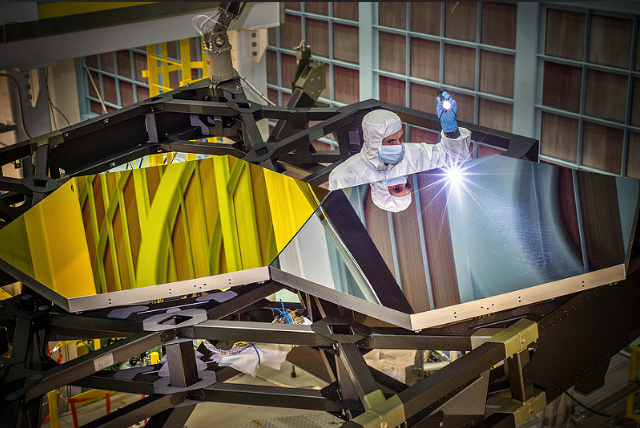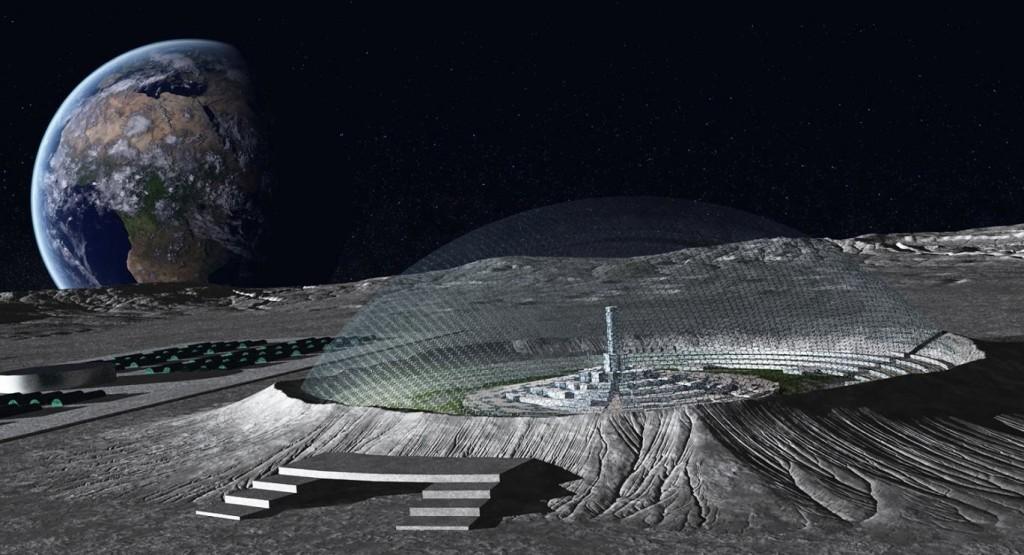Scientists are Zeroing in on Potentially Habitable Planets in the Milky Way – 3D Printing Could Ultimately Help Confirm Signs of Life
People have been talking about building telescopes on the moon for well over a decade. Imagine the possibilities – an unprecedented, up-close view of space that could reveal…who knows what? Look at all that has been discovered by NASA’s Kepler space telescope so far. Launched in 2009, Kepler’s mission is to survey a portion of the Milky Way so that scientists back on Earth can assess the number of Earth-sized planets orbiting other stars in the galaxy. Thus far, the mission – which has already gone on twice as long as was initially planned – has turned up 2,327 planets, with 4,706 more possible planets.
The latest development from Kepler is that scientists have narrowed down the field of discovered spheres and created a sort of “Top 20 Planets Most Likely to Harbor Aliens” list. Out of the thousands of planets cataloged so far, 216 have been determined to be in the habitable zones around their home stars, meaning that they’re close enough not to be frozen and far enough not to be overheated. Out of those 216, 20 are rocky, approximately Earth-sized planets, and they’re about to become subject to intense scrutiny.
So how do we find out if we really do have neighbors? Well, it’s not going to happen overnight. It’ll be a step-by-step process over several years, but 3D printing is likely to enter the equation before long. The next step is the launch of the James Webb Space Telescope in October 2018. The infrared telescope will zero in on the atmospheres of the 20 planets and use spectroscopy to determine the possible presence of life-suggesting elements such as water or methane. Then things get really tricky.
The Kepler telescope’s primary mirror is 1.5 meters, or 4.6 feet, in diameter. The James Webb telescope will significantly scale that up with a 6.5-meter primary mirror, which will be designed to fold up for the journey into space and expand to its full size once in orbit. But it’s going to take a telescope much, much bigger than either of those to actually get a good look at any of these planets, and that’s where the possibility of an observatory on the moon comes into play.
It’s taken a lot of technological maneuvering to figure out how to feasibly get a telescope the size of the James Webb into space, hence the folding mirror. For a telescope of the size needed to examine these planets up close, we’d pretty much need to build it in space, and while current technology isn’t there yet, 3D printing may allow it before too long. The European Space Agency has been discussing using 3D printing to build a base on the moon using in-situ materials such as moon dust, and the technology could potentially also be used to construct a massive telescope with mirrors of up to 50 meters in length. Installed on the moon, with no atmosphere to get in the way, such a giant telescope could have a clear view of these neighboring planets – clear enough to, say, detect the presence of land mass and oceans.

Optical Engineer Larkin Carey examines two test mirror segments for the James Webb Space Telescope. [Image: NASA]
NASA is eyeing the further development of 3D printing as a green technology, too. Recently, the agency named 3D printing as one of five green technologies that could reduce aircraft fuel usage and emissions by up to 75% in the next decade. Not only will this make standard air travel cheaper and more sustainable, but it further increases the possibility that we can eventually travel far into space without breaking the bank – or our own planet. Do you think this will become a reality? Discuss over in the 3D Printed Moon Observatory at 3DPB.com.
Subscribe to Our Email Newsletter
Stay up-to-date on all the latest news from the 3D printing industry and receive information and offers from third party vendors.
You May Also Like
Gorilla Sports GE’s First 3D Printed Titanium Cast
How do you help a gorilla with a broken arm? Sounds like the start of a bad joke a zookeeper might tell, but it’s an actual dilemma recently faced by...
Nylon 3D Printed Parts Made More Functional with Coatings & Colors
Parts 3D printed from polyamide (PA, Nylon) 12 using powder bed fusion (PBF) are a mainstay in the additive manufacturing (AM) industry. While post-finishing processes have improved the porosity of...
$25M to Back Sintavia’s Largest Expansion of Metal 3D Printing Capacity Since 2019
Sintavia, the digital manufacturing company specializing in mission-critical parts for strategic sectors, announced a $25 million investment to increase its production capacity, the largest expansion to its operations since 2019....
Velo3D Initiates Public Offering in a Bid to Strengthen Financial Foundations and Drive Future Growth
Velo3D (NYSE: VLD) has been among a number of publicly traded 3D printing firms that have attempted to weather the current macroeconomic climate. After posting a challenging financial report for 2023,...


































